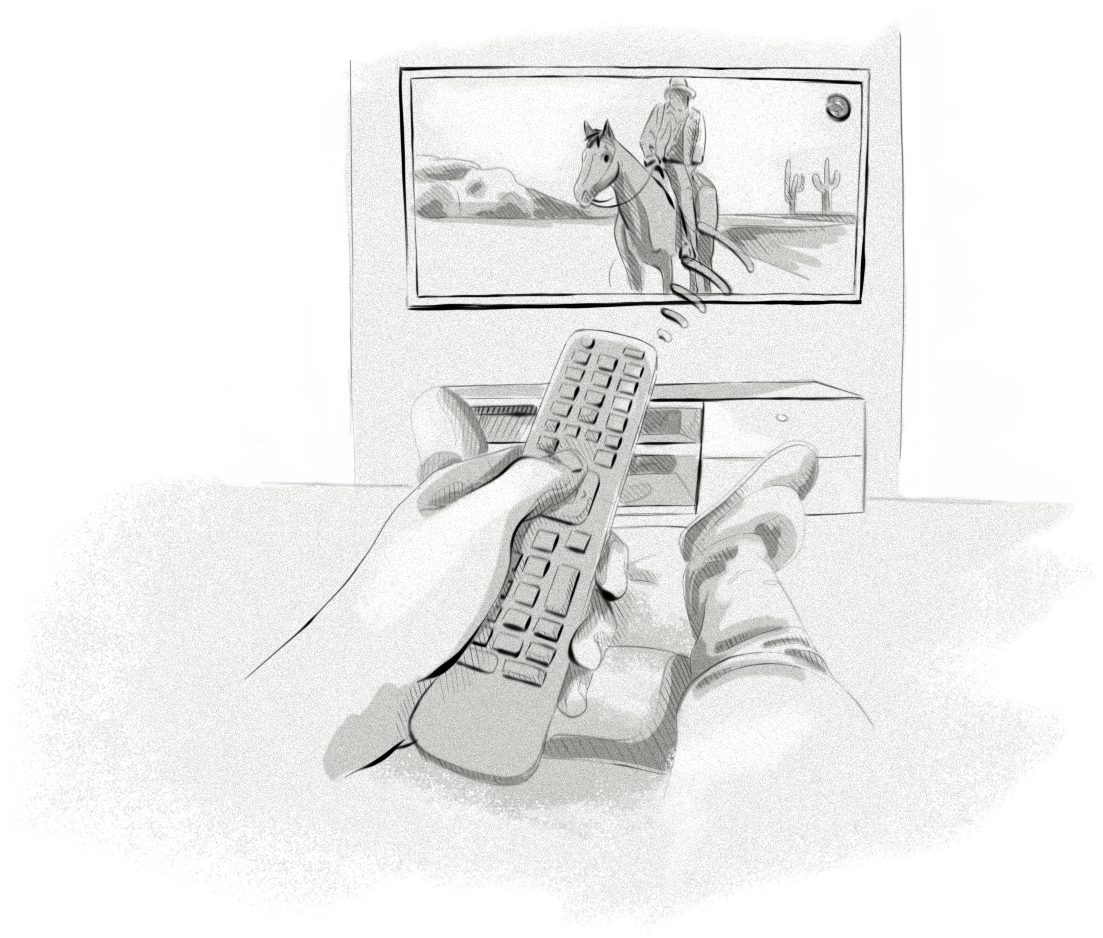Programmatic advertising has completely revolutionized many digital channels, such as web and in-app mobile. Now, programmatic advertising is making its way into emerging digital channels like connected TV (CTV). But not many people know that the underlying infrastructure of CTV advertising is powered by hybrid broadcast broadband TV (HbbTV).
In this blog post, you’ll learn how advertising in HbbTV works, what the main ad formats are, and what are its benefits.
We Can Help You Build a Connected TV (CTV) Ad Platform
Our AdTech development teams can work with you to design, build, and maintain a custom-built connected TV (CTV) ad platform for any programmatic advertising channel.
What Is Hybrid Broadcast Broadband TV?
Hybrid Broadcast Broadband TV (HbbTV) is a combination of broadcast TV and broadband Internet that aims to deliver an enhanced experience for viewers by offering additional services and content, which are typically accessed with remote control via a connected TV (aka smartTV). The viewer can turn on an application when they see the prompt on their TV, which is often in the form of a red dot in the corner of the screen. HbbTV applications can also be accessed via game consoles, over-the-top (OTT) streaming devices, and set-top boxes.
The HbbTV Association, which consists of broadcasters, Internet and technology companies, and device manufacturers, creates and manages the HbbTV standard to ensure that HbbTV is compatible across different devices and TV networks.
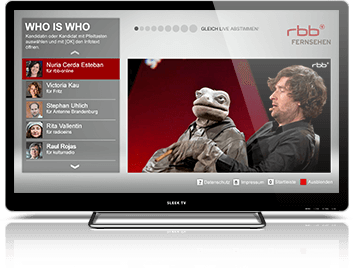
Source: HbbTV
HbbTV applications utilize the Internet to display content like high-resolution images and text, and various mechanisms for audience interaction. Viewers can view program guides, complete quizzes, read lyrics and access extra information with a single button push on their remote control.
HbbTV content, including ads, can be either related or independent to a broadcast and can transition between these models. For advertisers, this means that their ads can be displayed as a reference to a program, or separately from a program or channel.

Source: Nexttv
Thanks to the HbbTV standard, viewers can interact with ads by pressing a single button on the remote control. This simple mechanism offers great opportunities to reach a target audience precisely and attract their attention for longer.
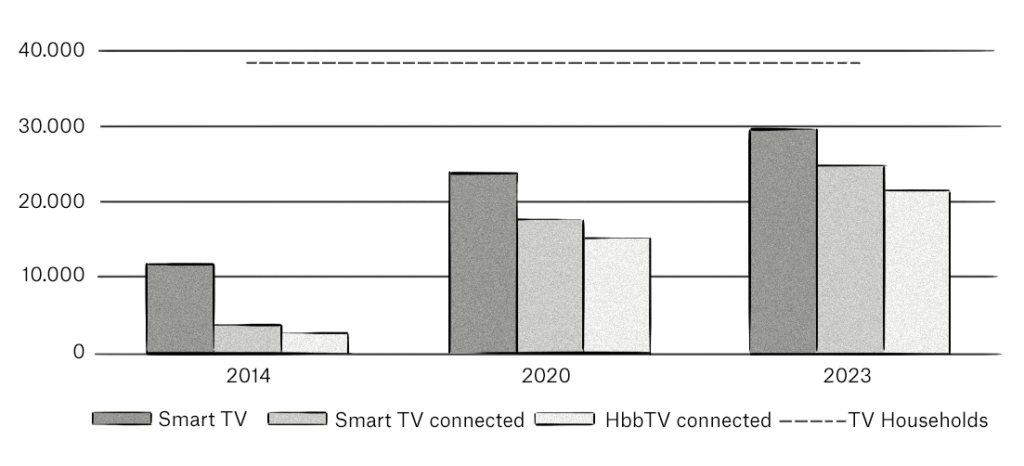
HbbTV Milestones
In 2006, the IRT research institute presented a concept of using pure HTML on end-points to show additional content. In 2008, in Berlin, Germany, the world saw the first demo of that concept system. A year later, an official team was formed to work on a specification for content delivery for connected TVs (CTVs) and set-top boxes with an Internet connection.
In June 2010, the European standards agency ETSI approved version 1.1.1 of the hybrid broadcast broadband TV specification. The following years brought quick development for the technology. Several European countries adopted it, as well as many countries in the Middle East. Symposia, forums, releases of new specifications, and joint collaboration with other technological units (Smart TV Alliance) helped to improve the performance and quality of applications.
In 2020, the HbbTV Association announced the release of the Targeted Advertising Specification (HbbTV-TA) to help introduce new advertising business models and deliver precise targeting methods.
Nowadays, there are over 75 members of the HbbTV Association. The organization’s purpose is to deliver entertainment services to consumers in a harmonious standard and take care of all the technical aspects.
How Do Hybrid Broadcast Broadband TV Ads Work?
Ad applications in HbbTV standard are created with web technologies such as HTML, CSS, Media Source Extensions (MSE), Encrypted Media Extensions (EME), and the Timed Text Markup Language (TTML). They have their own URL addresses, which are typically hosted on cloud servers.
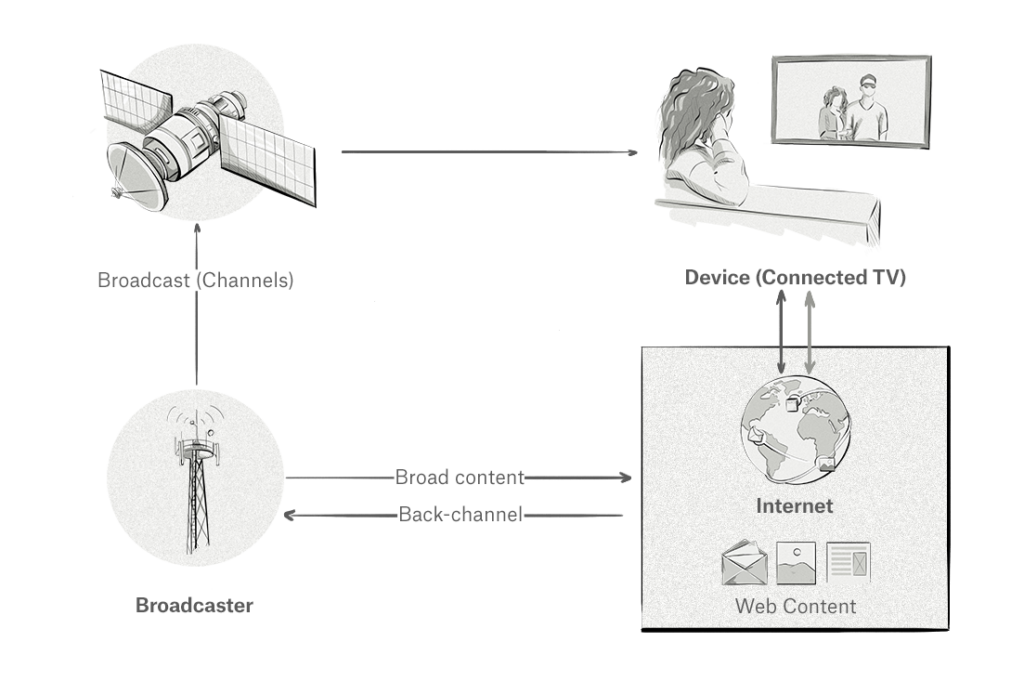
The information about the application’s URL is carried in an Application Information Table (AIT) or a watermark and received via a broadcasted signal. The TV is able to read the signal and communicate with the servers in order to access the application’s URL.
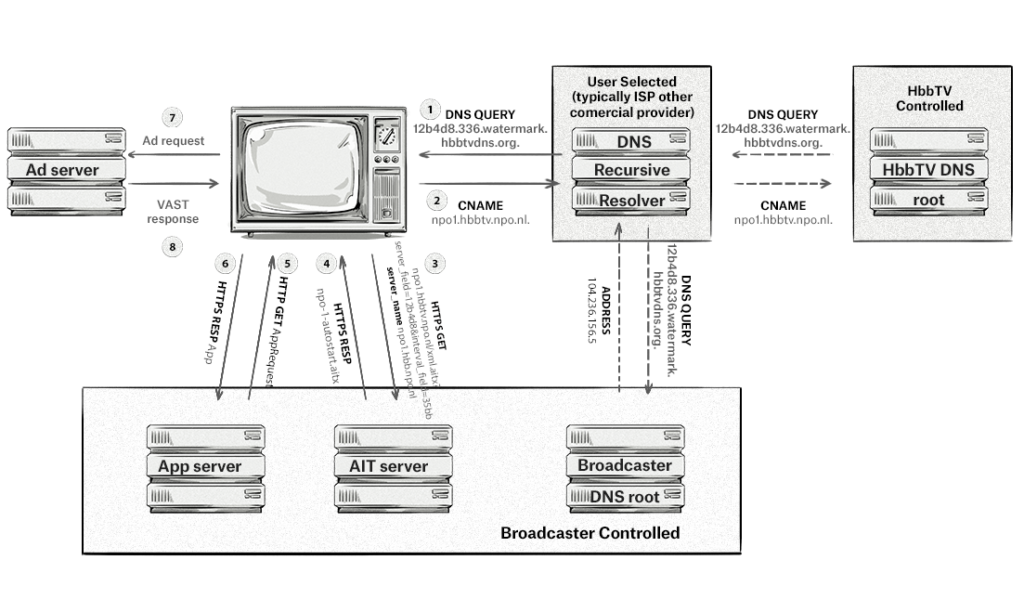
Depending on the device, there are three Application Discovery methods.

We can divide the process of delivering an ad into a few steps.
- The broadcaster application launches according to the “Application Discovery over Broadband” method.
- The broadcaster sends a message to the app announcing that an ad placement opportunity is near.
- The app confirms that the terminal can safely replace ads.
- The app asks the ad-decisioning server (e.g. ad server) for an ad that could be played.
- The app preloads the ad.
- The app tells the TV when to switch from HDMI to the ad.
- The app manages the delivery of the ad.
- The app reports back on playback of ad.
- The app switches back from the ad to HDMI.
What Do You Need To Display an Ad?
To display an ad via HbbTV, you can take two roads: You can either use the software provided by an advertising technology company that operates a digital ad network or do it yourself.
In the latter case, you will need:
- To provide the broadcaster a watermark for TV to run the application and register the watermark to redirect traffic to your application.
- An application that listens to the stream, reacts to ad placement opportunities, and sends ad requests to the ad server that displays an ad after receiving an ad response from the ad server.
- An AdTech stack is required to serve an ad — depending on the situation, it may be a simple ad server, an SSP, or maybe even an exchange.
HbbTV allows the video content to be complimented in various ways by the app. Typically, an icon appears on the screen, informing the user of the availability of extra HbbTV content complementing either the ad or the TV program the user is watching. Pressing a button on the remote launches the application.
Integrating HbbTV ads into broadcast signals requires the broadcaster to provide markers indicating ad breaks. The display of ads in these breaks is controlled programmatically by the digital ad server.
Popular Ad Formats
Just like on the Internet, advertising campaigns on HbbTV can either show ad content to the viewer in a range of different formats.
Common ad formats available to advertisers include:
- L-shaped ads: Ads that are shaped as the L letter take a large space on the screen displaying text and images.
- Banners: Information boxes (square or rectangular) are displayed in the lower right corner of the screen. Banners were the first format of programmatic ads on HbbTV. Depending on the size of an ad, it can take up to 25% of the screen area. Therefore, the viewer’s focus switches from the program the person is watching to the displayed ad.
- A video overlay ad: Volvo released a video with an overlay on it. A single click took the viewers to a form where they could book a test drive.
- Switchrolls: A video ad plays automatically when a viewer switches between channels.


Benefits of HbbTV Advertising
Advertisers who utilize HbbTV ad campaigns aim to target various households with their messages. These campaigns provide many benefits:
- Household profile building: Advertisers can identify a particular Internet-connected TV via its IP address. By doing that, they can provide dynamic ad substitution (DAS) and display more personalized ads.
- Lead generation campaigns: Advertisers can run lead generation campaigns that are directly aimed at a household’s preferences and interests.
- Data-driven insights: From every campaign advertisers get a report with strong and weak points of a particular campaign.
- Offer value connected with channel-based interests and program-based interests: An advertiser can create a complementary offering to a particular channel or TV program. For instance, a travel brand can show their ads on channels focused on traveling.
HbbTV Advertising from the Viewer’s Perspective
As mentioned above, there are many different ad formats available for HbbTV. Depending on the type ad being displayed, some viewers will simply view ads in the same way they do on non-digital TV, e.g. be displayed a video ad during a break, whereas other types of ads such as overlays will allow viewers to interact with the ad.
For most interactive ads, viewers will see a call-to-action button in the corner of the screen while watching a TV program. Using their remote control, they will be able to interact with the ad by pressing a certain button. From there, they can navigate the HbbTV ad’s functionalities via the buttons on the remote control. They can, for example, complete quizzes, play a game, fill in a form, and simply discover more about the advertiser’s offer.
What Advertising Opportunities Does HbbTV Offer?
As we said earlier, advertising via HbbTV is quite similar to advertising on the Internet as you can display interactive ads and show precisely timed ads delivered to your targeted audience based on data known about them. Advertisement administration systems, which are part of HbbTV, can optimize ad campaigns and provide viewers with ad content relevant to their preferences.
By using the HbbTV standard, advertisers can:
- Utilize mediums that show their products or services best.
- Reach their target audience.
- Display text and audiovisual information.
- Allow purchases via a form.
- Allow voting directly in the TV app.
Interactive ad formats enable advertisers to present products and services through a variety of ad templates. Advertisers can ask for a phone number and email address, display a product description, video, and photo gallery, and even allow the recipient to adjust the parameters of the offer to their preferences.
The advertising options in HbbTV are similar to those in other channels such as display and in-app:
- Direct sales campaigns
- Programmatic campaigns
- GEO targeting
- Premium targeting
- Remarketing
- Automatic data reporting
Wrap-Up
The HbbTV standard emerged in 2011. Since that time, over 75 members have joined the HbbTV Association to work on HbbTV applications, improve quality and performance standards, and introduce advertising. In most cases, to turn on a HbbTV application the viewer needs to simply click the red button or OK button on the remote control. The most popular ad formats are rectangular and square banners, L-shaped banners, overlay ads, and switchrolls. They display interactive ads based on the channel or program-based interests.
In order for HbbTV ads to be displayed, HbbTV applications need a broadcaster, a TV connected to the Internet, and an advertiser using some kind of advertising technology. The ads are then delivered to a household based on predefined campaign criteria. With HbbTV, an advertiser can promote products and services or deliver extra information to the viewers.
It’s worth mentioning that the HbbTV standard is constantly being updated with a new version arriving soon. The newer version of the standard will offer additional advertising capabilities and options, such as dynamic ad substitution, which will certainly propel the HbbTV advertising industry forward.
We Can Help You Build a Connected TV (CTV) Ad Platform
Our AdTech development teams can work with you to design, build, and maintain a custom-built connected TV (CTV) ad platform for any programmatic advertising channel.
